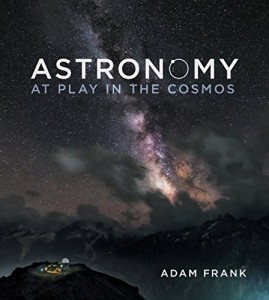Test Bank for Astronomy At Play in the Cosmos, Preliminary Edition
$35.00 Original price was: $35.00.$26.50Current price is: $26.50.
Test Bank for Astronomy At Play in the Cosmos, Preliminary Edition
This is completed downloadable of Test Bank for Astronomy At Play in the Cosmos, Preliminary Edition

Product Details:
- ISBN-10 : 0393124002
- ISBN-13 : 978-0393124002
- Author: Adam Frank
Astronomy: At Play in the Cosmos brings popular science writing to a textbook. In every chapter, author Adam Frank―a co-writer of the NPR blog “13.7 Cosmos and Culture”―integrates two interviews with leading scientists, a fascinating second voice that drives the narrative while making astronomy feel immediate, relevant, and real for students, and still capturing science’s human nature.
Table of Content:
- Chapter 1: Getting Started: Science, Astronomy, and Being Human
- 1.1 Miles Apart and Years Between
- 1.2 Very, Very Old and Really, Really Big
- 1.3 The Contents and Story of the Cosmos
- 1.4 Why Science?
- 1.5 Science, Politics, and the Human Prospect on a Changing Planet
- Anatomy of a Discovery
- Chapter Summary
- Questions and Problems
- Chapter 2: A Universe Made, a Universe Discovered: The Night Sky and the Dawn of Astronomy
- 2.1 An Old Obsession
- 2.2 Dance of Night and Day: Basic Motions of the Sky
- 2.3 Monthly Changes of the Moon
- 2.4 Celestial Wanderers: The Motion of Planets
- 2.5 Stone and Myth: Astronomy Begins
- 2.6 The Greek Advancement of Science
- Anatomy of a Discovery
- Chapter Summary
- Questions and Problems
- Chapter 3: A Universe of Universal Laws: From the Copernican Revolution to Newton’s Gravity
- 3.1 Getting Past Ptolemy: The Copernican Revolution
- 3.2 Planets, Politics, and the Observations of Tycho Brahe
- 3.3 Kepler and the Laws of Planetary Motion
- 3.4 Galileo Invents New Sciences
- 3.5 Newton and the Universal Laws of Motion
- Anatomy of a Discovery
- Chapter Summary
- Questions and Problems
- Chapter 4: A Universe of Universal Laws: How Light, Matter, and Heat Shape the Cosmos
- 4.1 Light: The Cosmic Envoy
- 4.2 Astrophysical Spectra
- 4.3 Spectra and the World of the Atom
- 4.4 Telescopes
- 4.5 Atmospheres and Their Problems
- Anatomy of a Discovery
- Chapter Summary
- Questions and Problems
- Chapter 5: Planetary Systems: Their Birth and Architecture
- 5.1 The Rest of the Solar System
- 5.2 Just the Facts: A Solar System Census
- 5.3 And Pluto Too! Asteroids, Comets, Meteoroids, and Dwarf Planets
- 5.4 Our Solar System and Others
- 5.5 Developing a Theory of Planetary System Formation
- Anatomy of a Discovery
- Chapter Summary
- Questions and Problems
- Chapter 6: Home Base: Earth and the Moon
- 6.1 Discovering Change: Arctic Crocodiles and the Earth-Moon System
- 6.2 Earth Inside and Out
- 6.3 Earth’s Near-Space Environment
- 6.4 The Closest Desolation: Earth’s Moon
- Anatomy of a Discovery
- Chapter Summary
- Questions and Problems
- Chapter 7: Sibling Worlds: Mercury, Venus, and Mars
- 7.1 Planet Stories
- 7.2 Mercury: Swift, Small, and Hot
- 7.3 Venus: Hothouse of the Planets
- 7.4 Mars: The Red Planet of Change
- Anatomy of a Discovery
- Chapter Summary
- Questions and Problems
- Chapter 8: Gas, Ice, and Stone: The Outer Planets
- 8.1 Giant Planets on a Roll
- 8.2 The Giant Planets: Structures and Processes
- 8.3 Jupiter: King of Planets
- 8.4 Saturn: Lord of the Rings
- 8.5 Uranus and Neptune: Ice Giants Discovered in Twilight
- Anatomy of a Discovery
- Chapter Summary
- Questions and Problems
- Chapter 9: Life and Planets: The Search for Habitable Worlds
- 9.1 The Origin of Life and a Trip to Antarctica
- 9.2 What Is Life, and Where Can It Exist?
- 9.3 The Origins of Life
- 9.4 Searching for Other Life in the Universe
- Anatomy of a Discovery
- Chapter Summary
- Questions and Problems
- Chapter 10: The Sun as a Star: Our Own Fusion Engine
- 10.1 Living with a Star
- 10.2 The Sun’s Fusion Furnace
- 10.3 Moving Energy
- 10.4 The Active Sun: Photosphere to Corona and Beyond
- Anatomy of a Discovery
- Chapter Summary
- Questions and Problems
- Chapter 11: Measuring the Stars: The Main Sequence and its Meaning
- 11.1 The Life of the Stars
- 11.2 Measuring Stars
- 11.3 From Observations to Explanations
- 11.4 The March of Time: Stellar Evolutionary Tracks
- Anatomy of a Discovery
- Chapter Summary
- Questions and Problems
- Chapter 12: Nursery of the Stars: The Interstellar Medium and Star Formation
- 12.1 Seeing in the Dark
- 12.2 Anatomy of the Interstellar Medium
- 12.3 Molecular Clouds: The Birthplace of Stars
- 12.4 From Cloud to Protostar
- 12.5 From Protostars to Fusion and Brown Dwarfs
- 12.6 Stellar Interaction
- Anatomy of a Discovery
- Chapter Summary
- Questions and Problems
- Chapter 13: To the Graveyard of Stars: The End Points of Stellar Evolution
- 13.1 Fireworks in a Galaxy Not So Very Far Away
- 13.2 How to Become a Giant: The Fate of Low- and Intermediate-Mass Stars
- 13.3 The Last Hurrah: Planetary Nebulas
- 13.4 White Dwarfs: Stellar Corpses of the First Kind
- 13.5 Living Fast, Dying Young: The End of Massive Stars
- 13.6 Big and Bigger Bangs: Novas and Supernovas
- 13.7 Neutron Stars: Stellar Corpses of the Second Kind
- Anatomy of a Discovery
- Chapter Summary
- Questions and Problems
- Chapter 14: Down the Rabbit Hole: Relativity and Black Holes
- 14.1 The Black-Hole Shuffle
- 14.2 Special Theory of Relativity
- 14.3 General Theory of Relativity
- 14.4 Anatomy of a Black Hole
- 14.5 Real Black Holes in Astronomy
- Anatomy of a Discovery
- Chapter Summary
- Questions and Problems
- Chapter 15: Our City of Stars: The Milky Way
- 15.1 A Hard Rain: A New Vision of Galactic Studies
- 15.2 Anatomy of the Milky Way
- 15.3 Spiral Arms: Does the Milky Way Have Them?
- 15.4 The Galactic Center
- 15.5 Dark Matter and the Milky Way
- 15.6 Constructing a Galaxy: Evolution of the Milky Way
- Anatomy of a Discovery
- Chapter Summary
- Questions and Problems
- Chapter 16: A Universe of Galaxies: Beyond the Milky Way
- 16.1 The Great Debate and the Scale of the Universe
- 16.2 Galactic Zoology
- 16.3 The Cosmic Distance Ladder
- 16.4 Monsters in the Deep: Active Galactic Nuclei
- 16.5 Galaxies and Dark Matter
- Anatomy of a Discovery
- Chapter Summary
- Questions and Problems
- Chapter 17: The Cosmic Web: The Large-scale Structure of the Universe
- 17.1 Bright Lights, Big Universe
- 17.2 Cosmic Neighborhoods: Galaxy Groups and Galaxy Clusters
- 17.3 Superclusters and Large-Scale Structure
- 17.4 Large-Scale Cosmic Structure and Cosmic History
- 17.5 Building Cosmic Structure
- Anatomy of a Discovery
- Chapter Summary
- Questions and Problems
- Chapter 18: Endings and Beginnings: Cosmology
- 18.1 How to Win a Nobel Prize: The Accelerating Universe
- 18.2 Our Cosmology: The Big Bang
- 18.3 How Do We Know? The Three Observational Pillars of Big Bang Theory
- 18.4 Beyond the Classic Big Bang Model
- 18.5 Questions about “Before” and “Everything”
- Anatomy of a Discovery
- Chapter Summary
- Questions and Problems
- Appendix 1
- Appendix 2
- Appendix 3
- Appendix 4
- Appendix 5
- Appendix 6
- Appendix 7
- Appendix 8
- Selected Answers
- Glossary
- Credits
- Index
- Endpaper 1
- Endpaper 2
People Also Search:
astronomy at play in the cosmos, preliminary edition
astronomy at play in the cosmos pdf
astronomy at play in the cosmos
astronomy at play in the cosmos, preliminary download scribd
Related products
Test Bank
Test Bank for Essentials of Business Law and the Legal Environment, 11th Edition: Richard A. Mann











